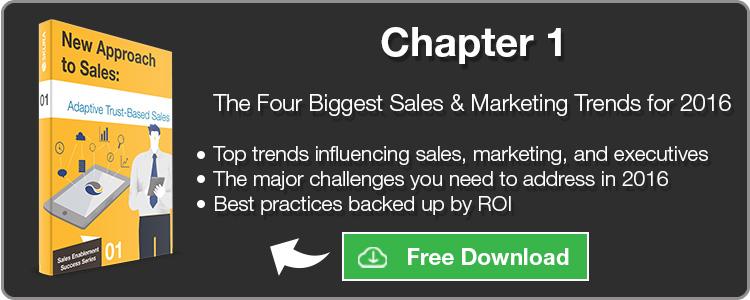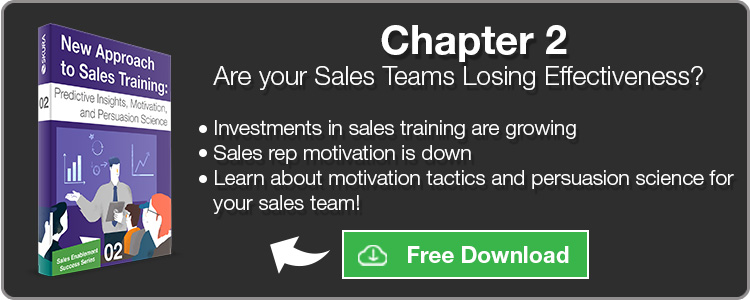Sales reps are expected to effectively overcome objections and add value to the discussion, yet with less information than ever before. Buyers are becoming more empowered with marketing content that dangerously tips the scales of knowledge and puts the seller in a disadvantaged position.
Today we dig into the world of handling objections with a buyer empowered to self-educate and formulate their own unknown buying criteria.
The complex process of building relationships and understanding customer pain points is increasingly under threat from the new buyer decision journey, where most prefer to progress their own decision journey and choose only to contact a sales rep near the end of the sales process.
The new buyer decision journey is something that we are well aware of at SKURA, follow THIS LINK to learn more. Adding value now depends on leveraging appropriate digital content marketing communications to help a buyer guide their own journey.
Image 1 illustrates the new paradigm well, as the marketing team now has a more direct influence on initial buyer decision journey stages. I invite you read THIS POST about how marketers specifically guide the sales process throughout this self-discovery.

(Image 1 Source: Kissmetrics.com)
The fatal flaw in this new digital sales journey is a sales rep who is less in tune with the buyer, yet still expected to overcome objections just like before.
What we’re talking about today is just one small part of what we defined as "The New Sales Process" in the first chapter of our ‘Sales Enablement Success’ series. Click the link below for a FREE download, and learn about the trends impacting sales and marketing in every industry, and best practices to overcome these hurdles.
Understanding Objections
Why Objections Happen
Objections are a crucial component to a healthy sales process. The back and forth dialogue enlightens a sales rep to new ways of selling, and validates the seriousness of the seller.
Top reasons include:
- Failed to qualify the lead;
- Failed to identify the need;
- Buyer lacks information;
- Buyer is resistant to change;
- Prospect is avoiding a meeting; and
- Matter of custom.
With the exception of that last one, where some buyers just naturally object as a standard of their decision process (perhaps even to see if it’ll throw you off), every other objection can be rectified long before it ever comes up with stronger sales and marketing alignment. To learn more about this, and five best practices for success, CLICK HERE.
Avoid Objections Before they Happen
Whenever possible, unnecessary objections should be avoided because they can throw off the conversation and add friction to the sales call.
An effective deterrant to objections is to use what is known as the SPIN technique. SPIN is a series of four question types that enable the sales rep to gather relevant data around the buyer during a discussion.
Let’s look at these question types from a sales enablement software perspective:
Situational Questions: These are fact finding questions about the buyer that help the seller frame needs. BE VERY CAREFUL with these as they are among the most commonly used, and can abe very frustrating to a buyer. These questions are often part of the prospecting process with some examples being:
- What are you using currently for your content management?
- How long have you used that?
- Do you own that product/service, rent, lease?
Problem Questions: These are used to probe for problems, challenges, points of dissatisfaction or just difficulties in general. The objective of these should point you to the prospect’s core need for the product. Examples include:
- Are you happy with your current sales content management software?
- Can your sales reps effectively use the digital content being created for them?
- What are some problems you’re having with understanding content consumption?
Implication Questions: Here you’re probing for consequences of the problem. This line of questioning is two-fold: 1) it helps the seller uncover the real needs that can be solved; and 2) it helps the buyer realize that they actually have a problem. These questions help break down buyer-centric problems, rather than product-centric solutions. Examples Include:
- Are your sales reps creating their own digital content for selling?
- How does your marketing team know what content to create for sales reps?
- Do your sales and marketing teams work/communicate together for inbound content?
- Do your executives have awareness into front line communications across the world in each geographic market?
Needs Payoff Questions: These questions focus on the prospect’s attention to the solution instead of just the problem itself. Answers to these questions actually influence your prospect to tell you the benefits that they are looking for. Only ask these questions AFTER the customer has expressed a need from the previous implication questions, otherwise the customer can completely deny the existence of the need.
- How would it help if your sales reps only had access to the content that was contextually relevant to the persona in question?
- Do you see the value in marketing teams knowing exactly which content influenced the sale after MQL hand-off occurred?
- Would it be useful if your executive team could see the industries and buyers that closed most often with the communication that was being delivered?
- Why is it important to you that your sales reps stop creating content, and organizing that content in email attachments?
(Sources for SPIN Questions: CSUS.edu, 1988; and, Wolfram.org, nd.)
The appropriate application of SPIN questioning is about finding a happy medium between under-execution and over-compensation. The consequences of both are equally undesirable. Too few SPIN questions, and you are left open to objections and doubt by the buyer. Too many and used incorrectly, you will alienate the buyer and ruin the buying experience.
Do you See the Problem?
When you have an empowered buyer, the challenges are magnified because it is increasingly more difficult to ask these questions. Though SPIN preps the seller for success during the later portions of the decision process, aka obtaining commitment, SPIN is meant for the investigation phase.
What SPIN doesn't do is accommodate an empowered buyer- one who doesn’t want to hear Situational or Problem questions. They want customer-centric solutions, and MQL hand-off occurs after the buyer has already developed their own problem awareness.
This is exactly what we found in the second chapter of our ‘Sales Enablement Success’ series. A New Approach to Sales Training is needed to close this gap. Many sales reps are taught SPIN, especially in academia. Click the link below to download a FREE copy of that eBook and learn why the traditional trust- based sales process is going by the wayside.
Successfully Preparing for Objections.
Here’s how I like to see it.
The sales funnel of the past was like a mountain. You knew that there was going to be a challenge ahead of you, but the right effort in the right places could get you over the peak. The difficulty of selling was like the size of the escarpment but success starts with one foot in front of the other and a keen eye for challenges along the way.
Today the sales process is more akin to an iceburg, and the challenge can be quite deceptive. You receive your lead from Marketing, the tip seems well within reach, but in reality the challenge is ambiguous, and requires a new and unique set of skills to understand. Fail in addressing the challenges and you fall victim to everything underneath the depths of buyer awareness.

(Image Source: Telesalesmaster)
In a later post I’ll go into the types of objections you can receive throughout the sales process, ways you can overcome these hurdles, and of course, the role of digital content along this journey. The LINK TO THAT POST will be HERE.
Weathering the Hidden Depths of Objections
You should always consider why a client should or shouldn’t buy, and structure your conversation to minimize this disadvantage. Consider these helpful hints:
- Develop and maintain a consistent positive attitude;
- Always tell the truth;
- Be anticipative of objections;
- Relax, listen, and don’t interrupt;
- Address known problems before they have a change to arise;
- Be sincere and sympathetic; and
- Be wary of the difference between objections and excuses.
Finally, ensure that you or your sales reps have the tools to see a 360 degree view of the buyer ahead of time.
Just like the iceburg, the reality of this new decision journey should be an easier and shorter sales cycle, as you start at the top. Equip your teams with the technology they need to understand how a buyer interacted with content before they became an MQL, so that you can get your customers to say YES with digital sales content.
If you’d like to see how sales enablement software closes this gap, request a demo below and let us show you what real sales enablement can do.













